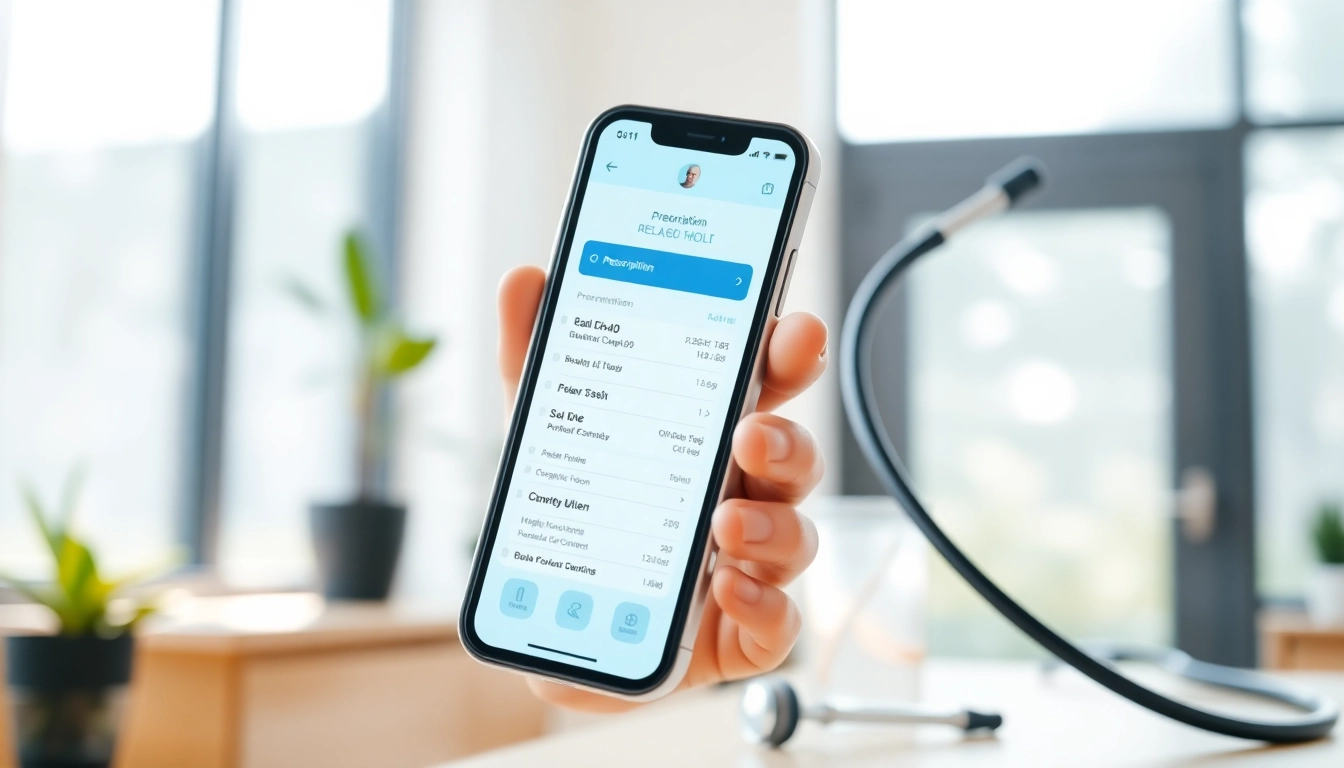Key Advantages of Using E-Prescription Apps for Enhanced Patient Care
Understanding E-Prescription Apps
Definition of E-Prescription Apps
E-prescription apps are digital tools and platforms that allow healthcare providers to electronically send prescriptions directly to pharmacies. These applications streamline the entire prescribing process by replacing traditional paper prescriptions and often include features such as medication history reviews, allergy alerts, and dosage recommendations. Designed to enhance efficiency and accuracy, e-prescription apps have become an integral part of modern healthcare delivery.
How E-Prescription Apps Work
The operation of e-prescription apps involves several key steps. Firstly, a healthcare provider inputs the patient’s information and prescription details into the app. The app then verifies the patient’s medication history and potential drug interactions, providing alerts if necessary. After this verification, the prescription is electronically transmitted to the patient’s chosen pharmacy, where it can be filled without the need for a physical visit to the doctor’s office. This process not only saves time but also reduces the risk of errors associated with hand-written prescriptions.
Key Features of E-Prescription Apps
- Medication Overview: Providers can access patients’ medication histories for informed prescribing.
- Real-time Alerts: Patients receive notifications for refills, potential drug interactions, and allergy risks.
- User-friendly Interface: Intuitive designs allow for easy navigation, making it accessible for all users.
- Data Security: Sensitive patient information is encrypted to comply with healthcare regulations.
- Pharmacy Integration: Seamless connection with various pharmacies ensures efficiency in processing prescriptions.
Advantages of Using E-Prescription Apps
Streamlined Medication Management
One of the most significant advantages of using eprescription apps is the streamlined management of medications for patients. Traditional methods often involve cumbersome paperwork and potential delays, whereas e-prescribing allows for immediate transmission of prescriptions. As a result, pharmacists can prepare medications faster, improving the overall patient experience. Patients can also easily manage their prescriptions, including requesting refills, reducing unnecessary office visits and phone calls.
Improved Patient Adherence
Improved patient adherence is another hallmark benefit. E-prescription apps often feature medication reminders and education tools that help patients understand their treatment plans. Studies have shown that when patients are informed about their medications—why they are taken and how they should be managed—they are more likely to stick to their prescribed regimens. Features such as notifications for refill requests further enhance adherence by reminding patients to pick up medications on time.
Enhanced Communication between Providers and Patients
Enhanced communication is a direct consequence of utilizing e-prescription apps. These platforms often include secure messaging features that facilitate real-time interaction between healthcare providers and patients. This improved communication can lead to better clarification of treatment plans, allowing patients to voice concerns or ask questions, contributing to better health outcomes. Additionally, such features help to keep patients more engaged in their healthcare journey.
Impact on Healthcare Providers
Increased Efficiency in Prescribing
E-prescription apps contribute significantly to increased efficiency in prescribing practices. By eliminating the need for paper prescriptions, healthcare providers can spend more time focusing on patient care rather than paperwork. The digital nature of e-prescribing also means that prescriptions can be sent instantly, reducing wait times for both patients and pharmacies. Furthermore, many e-prescription systems integrate with Electronic Health Records (EHR), ensuring that providers have access to comprehensive patient data when prescribing.
Reduction of Medication Errors
Medication errors pose a significant risk in healthcare; e-prescription apps serve as a robust solution to this issue. By eliminating handwriting errors—common pitfalls in traditional prescribing—e-prescription reduces the likelihood of misinterpretation by pharmacies. Additionally, built-in clinical decision support systems in these apps can alert providers to potential drug interactions or contraindications, enhancing patient safety and care quality.
Better Patient Engagement and Satisfaction
Beneath the surface of clinical efficiency lies a profound impact on patient engagement and satisfaction. The use of e-prescription apps fosters a proactive healthcare experience; patients feel more in control of their medication management. Simple, understandable features like refill reminders contribute to higher satisfaction rates, as patients appreciate receiving timely notifications. Overall, the adoption of such technologies can lead to improved healthcare experiences and better health outcomes for patients.
Challenges in Implementing E-Prescription Apps
Technical Barriers and Training Requirements
While the advantages of using e-prescription apps are considerable, various challenges arise during their implementation. Technical barriers can hinder the adoption process, particularly among older healthcare systems that may lack the necessary infrastructure for digital solutions. Additionally, staff training is often required to ensure that healthcare providers can utilize the app’s features fully. Implementing a comprehensive training program can mitigate resistance and facilitate smoother transitions to digital platforms.
Patient Privacy and Data Security Concerns
The safeguarding of patient privacy and data security is paramount in any healthcare setting, and e-prescribing apps are no exception. There are concerns regarding unauthorized access to sensitive health information, which can lead to potential data breaches. Ensuring compliance with healthcare regulations such as HIPAA is essential. Adequate measures must be instituted to protect patient data, including encryption and secure access protocols, to foster trust in the technology.
Resistance to Change among Healthcare Professionals
Resistance to change can also pose challenges when adopting e-prescription systems. Many healthcare professionals may feel comfortable with established methods and may be hesitant to transition to digital apps. Effective communication regarding the benefits of e-prescripting and involving staff in the decision-making process can help alleviate these concerns. Demonstrating how e-prescription supports rather than disrupts established practices may also facilitate smoother transitions.
Future of E-Prescription Apps
Emerging Trends in E-Prescribing
The future of e-prescription apps looks promising, with several emerging trends on the horizon. One notable trend is the integration of artificial intelligence (AI), which can provide personalized medication recommendations and support clinical decision-making. AI-driven analytics can help track patient adherence patterns and offer context-aware interventions, ultimately enhancing healthcare outcomes. Blockchain technology may also play a role in securing prescription transactions, ensuring the integrity and confidentiality of patient data.
Integration with Other Digital Health Solutions
The potential for integration with other digital health solutions is another exciting prospect for e-prescription apps. As telemedicine continues to gain popularity, e-prescribing can be seamlessly integrated into virtual consultations, allowing healthcare providers to prescribe medication remotely. This integration can create a holistic patient experience that merges various healthcare facets, from diagnosis to treatment, all within a single digital ecosystem.
Potential for Growth in Patient-Centric Care
Patient-centric care is a vital component of modern healthcare, and e-prescription apps are poised to contribute significantly to this growth. By providing patients with easy access to their medication information, educational resources, and personalized reminders, these apps empower individuals to take charge of their health. As more patients seek tailored and convenient care solutions, e-prescription apps will become an essential tool in fostering engagement and encouraging proactive health management.














Post Comment